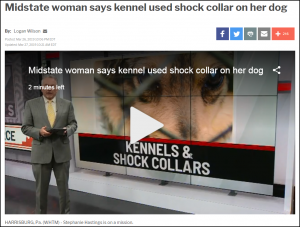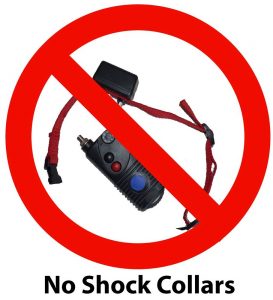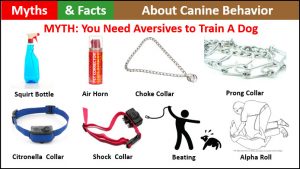< A short link to this post – http://bit.ly/ShockBARK-JUL2019 >
< UPDATED – 27JUL19 >
< A short link to a podcast on this topic – http://bit.ly/WfMw-WhatShock-27JUL19 >

< The original version of this article was published in the July 2019 issue of Barks from the Guild, a publication of the Pet Professional Guild. >You may read it in its original format by clicking here, or you may download a printable PDF file by clicking here.
The Pet Professional Guild (PPG) was founded in 2012 by current president, Niki Tudge. As a dog training and pet care professional, Tudge, like many of us, was discouraged by the flawed and harmful information being disseminated around the profession, including by some trainers, day care operators, groomers, boarding kennels, breeders, shelters, rescues, veterinarians, and even “reality” television shows. In some cases, the latter were promoted as offering “expert” dog training advice, but were, in fact, just like most “reality” TV: entertainment based on conflict and drama.
From its inception, PPG has been committed to the training, care, and management of companion animals that are free from pain, force, and fear. Its Guiding Principles (2012) state that members are obligated to follow this philosophy: “To be in any way affiliated with the Pet Professional Guild, all members must adhere to a strict code of conduct. Pet Professional Guild members understand Force-Free to mean: No shock, No pain, No choke, No fear, No physical force, No compulsion based methods are ever employed to train or care for a pet.” [Emphasis added]
management of companion animals that are free from pain, force, and fear. Its Guiding Principles (2012) state that members are obligated to follow this philosophy: “To be in any way affiliated with the Pet Professional Guild, all members must adhere to a strict code of conduct. Pet Professional Guild members understand Force-Free to mean: No shock, No pain, No choke, No fear, No physical force, No compulsion based methods are ever employed to train or care for a pet.” [Emphasis added]
This guarantee to kind, compassionate and scientific training methods is why I am a member of PPG and why the Find A Professional section of the PPG website is the first place I go when looking to refer to another pet care professional. Whoever I recommend reflects on my reputation and that of my business, so it is essential I know that those receiving my referrals are committed to training, care, and management that comply with PPG’s Guiding Principles.
In January 2015, the PPG Advocacy Committee was born with its mission defined thus: “To reduce or eliminate the practice of using 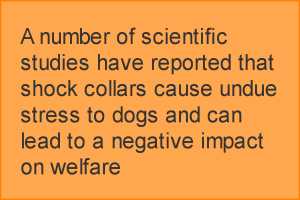 electronic shock devices in the training of domestic pet animals. PPG will achieve this goal through strategic professional, respectful and energetic processes of advocacy and education. These efforts will at all times adhere to the Guiding Principles of PPG and will be accomplished through the development of specific action plans, as determined by members of the PPG Advocacy Committee.”
electronic shock devices in the training of domestic pet animals. PPG will achieve this goal through strategic professional, respectful and energetic processes of advocacy and education. These efforts will at all times adhere to the Guiding Principles of PPG and will be accomplished through the development of specific action plans, as determined by members of the PPG Advocacy Committee.”
Key to this plan was to use the existing and developing scientific literature, demonstrating that using shock to train animals is unnecessary and often harmful and not in the interest of animal welfare, as a foundation. Next came the Shock-Free Coalition, established in September 2017, a child of the Advocacy Committee, but a separate entity with its own website and a very clear mission: “The key purpose of the Shock-Free Coalition is to build a strong and broad movement committed to eliminating shock devices from the supply and demand chain. This goal will be reached when shock tools and equipment are universally unavailable and not permitted for the training, management and care of pets.”
Critical steps in this process are:
- To engage and educate pet owners and shelter/rescue workers to help them make informed decisions about the management, care, and training of the pets in their charge.
- To build a worldwide coalition that provides pet owners access to competent, professional pet industry service providers.
- To create widespread pet industry transparency and compliance regarding how professionals implement their services and communicate their philosophy to pet owners.
- The Shock-Free Coalition website serves as an educational resource for anyone wanting to learn more about the organization and why ending the use of shock is so essential. It also offers anyone the opportunity to support the cause by taking the Shock-Free Pledge,
 either as an individual or as a business. Participants may pledge at several different levels ranging from simply signing the pledge to signing the pledge and making a recurring financial contribution to help the mission continue toward its goal.
either as an individual or as a business. Participants may pledge at several different levels ranging from simply signing the pledge to signing the pledge and making a recurring financial contribution to help the mission continue toward its goal.
What Does Science Tell Us about Shock?
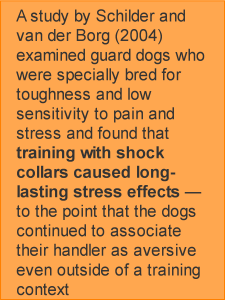 The Shock-Free Coalition did not come to its conclusion that using shock for the training, care, and management of pets was unnecessary and harmful out of the blue. Its position is based on the careful review of the growing number of peer reviewed, scientific studies that demonstrate that shock is not only unnecessary, but is harmful, both physically and psychologically.
The Shock-Free Coalition did not come to its conclusion that using shock for the training, care, and management of pets was unnecessary and harmful out of the blue. Its position is based on the careful review of the growing number of peer reviewed, scientific studies that demonstrate that shock is not only unnecessary, but is harmful, both physically and psychologically.
What Do the Professional Organizations Say?
The current scientific data, in addition to the moral and ethical concerns about mental and physical damage to animals subjected to methods using force, fear and/or pain have moved a number of representing professional organizations to advocate for the use of humane training techniques founded on evidence-based learning theories and avoid training methods or devices which employ coercion, pain, force and/or fear (Tudge & Nilson, 2016). These include, but are not limited to:
- “The American Animal Hospital Association (AAHA) guidelines oppose aversive training techniques, such as prong (pinch) or choke collars, cattle prods, alpha rolls (forcibly rolling a pet on his or her back), electronic shock collars, entrapment, and physically punishing a pet. The guidelines
 note that aversive training techniques can harm or even destroy an animal’s trust in his or her owner, negatively impact the pet’s problem-solving ability, and cause increased anxiety in the animal. Aversive techniques are especially a concern if pets are already fearful or aggressive, rendering any aggressive dog more dangerous. According to the AAHA guidelines, the only acceptable training techniques are non-aversive, positive techniques that rely on the identification of, and reward for, desirable behaviors. Positive reinforcement is the most humane and effective approach.” – American Animal Hospital Association (2015).
note that aversive training techniques can harm or even destroy an animal’s trust in his or her owner, negatively impact the pet’s problem-solving ability, and cause increased anxiety in the animal. Aversive techniques are especially a concern if pets are already fearful or aggressive, rendering any aggressive dog more dangerous. According to the AAHA guidelines, the only acceptable training techniques are non-aversive, positive techniques that rely on the identification of, and reward for, desirable behaviors. Positive reinforcement is the most humane and effective approach.” – American Animal Hospital Association (2015).
- “The Canadian Veterinary Medical Association (CVMA) supports the use of humane training methods for dogs that are based on current scientific knowledge of learning theory. Reward-based methods are highly recommended. Aversive methods are strongly discouraged as they may cause fear, distress, anxiety, pain or physical injury to the dog.” – – Canadian Veterinary Medical Association (2015).
- “Aversive, punishment-based techniques may alter behaviour, but the methods fail to address the underlying cause and, in the case of unwanted behaviour, can lead to undue anxiety, fear, distress, pain or injury.” – British Columbia Society for the Prevention of Cruelty to Animals (2019).
- The British Small Animal Veterinary Association (BSAVA) “recommends against the use of electronic shock collars and other aversive methods for the training and containment of animals. Shocks and other aversive stimuli received during training may not only be acutely stressful, painful and frightening for the animals, but may also produce long term adverse effects on behavioural and emotional responses…The BSAVA strongly recommends the use of positive reinforcement training methods that could replace those using aversive stimuli.” – British Small Animal Veterinary Association (2019).
- “The British Veterinary Association (BVA) has concerns about the use of aversive training devices to control, train or punish dogs. The use of devices such as electronic collars, as a means of punishing or controlling behaviour of companion animals is open to potential abuse and incorrect use of such training aids has the potential to cause welfare and training problems…Electric pulse devices are sometimes used in dog training as a form of punishment to prevent a dog from repeating bad behaviour. Although training a dog is important for their well-being, research shows that electric pulse collars are no more effective than positive reinforcement methods. BVA has consulted with experts and examined the evidence. Research by Schalke, Stichnoth and Jones-Baade (2005) showed that the application of electric stimulus, even at a low level, can cause physiological and behavioral responses associated with stress, pain and fear. In light of the evidence, BVA has concluded that electric pulse collars raise a number of welfare issues, such as the difficulty in accurately judging the level of electric pulse to apply to a dog without causing unnecessary suffering.” – British Veterinary Association (2018).
- “The New Zealand Veterinary Association (NZVA) does not support the use of electronic behaviour modifying collars (e-collars) that deliver aversive stimuli for the training or containment of dogs. E-collars have the potential to harm both the physical and mental health of dogs. They are an aversive training method that have in some studies been associated with significant negative animal welfare outcomes. Positive reinforcement training methods are an effective and humane alternative to e-collars for dog training…The use of pain to train dogs is no more acceptable or humane when it is administered by remote control, than if it was delivered as a physical blow such as a punch or kick.” – New Zealand Veterinary Association (2018).
- “E-collar training is associated with numerous well documented risks concerning dog health, behavior and welfare. Any existing behaviour problem is likely to deteriorate or an additional problem is likely to emerge, when such a collar is used. This becomes an even greater risk when this aversive tool is used by an unqualified trainer (as training is largely unregulated throughout the EU, it appears that a large number of trainers are unqualified). Additionally, the efficacy of these collars has not been proven to be more effective than other alternatives such as positive training. Hence, European Society of Veterinary Clinical Ethology (ESVCE) encourages education programmes which employ positive reinforcement methods (while avoiding positive punishment and negative reinforcement) thereby promoting positive dog welfare and a humane, ethical and moral approach to dog training at all times.” – European Society of Veterinary Clinical Ethology (2017).
- In addition to these professional bodies, several countries, including England, Wales, Austria, Germany, Switzerland, Slovenia, Denmark, Sweden, Norway and Finland, the province of Quebec in Canada, and the states of New South Wales, South Australia and the Australian Capital Territory (ACT) in Australia, have already banned electronic stimulation devices. Under recent amendments to ACT animal welfare legislation, anyone who places an electric shock device, such as a shock collar, on an animal, will attract a maximum penalty of AU$16,000 [$11,000] and a year’s imprisonment (Brewer, 2019). In Scotland, “strict guidance” has been published by the Scottish Parliament which provides “advice on training methods and training aids for dogs, with particular focus on the welfare issues that may arise from the use of aversive methods including e-collars. It highlights the potential consequences of the misuse of aversive training aids, including possible legal consequences.” (The Kennel Club, 2018) (Tudge, Nilson, Millikan & Stapleton-Frappell, 2019).
 Examining Arguments
Examining Arguments
Meanwhile, there are pet care professionals, pet owners, and moneyed interests, such as the companies that manufacture and sell shock collars, who disregard all the research and advocate for the continued use of shock. Common arguments include that the shock “does not cause pain or discomfort” and therefore cannot be abusive or inhumane; shock is “more efficient” for training than positive reinforcement training; shock is the “only way” certain behaviors can be trained (e.g., snake avoidance training); and using shock “saves dogs’ lives.” Let’s now look at each of those arguments individually and examine them from a scientific perspective.
#1: Does the electric shock from a shock collar cause pain? States Anderson (2012): “During the initial training period, [shock] must be painful, uncomfortable, or frightening, or it wouldn’t work. It has to have some unpleasant feeling that is robust enough to get the dog to work to make it stop.”
Science, through published peer reviewed research, is quite clear that shock collars cause pain. While proponents might call it a “stim” a “tap,” or a “static charge,” we know from the science of operant conditioning that the aversive stimulus (electric shock) must be sufficiently distressing (i.e., physical or emotionally painful) to cause a change in behavior. If it did not hurt, it would not work.
Several studies have reported that shock collars cause undue stress to dogs. A study by Schilder and van der Borg (2004) examined guard dogs who were specially bred for toughness and low sensitivity to pain and stress and found that training with shock collars caused long-lasting stress effects — to the point that the dogs continued to associate their handler as aversive even outside of a training context. The dogs exhibited behaviors associated with fear and anxiety long after they had received shocks. “The conclusions, therefore are, that being trained [with electric shock] is stressful. That receiving shocks is a painful experience to dogs, and that the dogs have learned that the presence of their owner (or his commands) announces reception of shocks, even outside of the normal training context.” (Schilder & van der Borg, 2004).
Fear and Anxiety
Late veterinarian Dr. Sophia Yin (2011) discussed this study in a post on her blog and made the following key conclusions:
- Overall, the researchers concluded that even when compared to working dogs trained using choke chain and pinch collar corrections, dogs trained with electronic shock collars showed more fear and anxiety behaviors than those trained by other traditional police dog and watch-dog methods.
- Avoidance behavior and fear postures during the shocks indicated that the shock elicited both pain and fear and therefore were not just a distraction or nuisance.
- “The enormous rewards the dogs experience during training i.e. chasing down, catching a criminal and winning the sleeve, do not counter the negative effects of getting shocked. This is in spite of the fact that handlers of non-shocked dogs admitted that they use prong collars and that their dogs experienced beatings and other harsh punishment, such as kicks or choke collar corrections.” (Yin, 2011).
An important point to note here is that shock collar users may sometimes say something along the lines of, “I don’t use the shock feature any more. I only use the collar with the beep on now.” However, the Shock-Free Coalition (2019) points out that the tone itself can become as aversive and damaging as the shock once the association has been established: “If I pull out a gun, and I cock it, are you any less scared than if I fired it? If your dog does what you ask when he hears the beep, it means that he has learned that the beep predicts a painful shock, just like cocking the gun predicts a bullet hitting you. While the collar is no longer physically hurting the dog, it can still be scarring him emotionally.”
Another study, by Schalke, Stichnoth, Ott and Jones-Baade (2007), examined the use of shock for training to stop undesirable hunting/ chasing behavior. This study also revealed that the dogs being trained with shock found it to be very stressful. The authors concluded, “…the general use of electric shock collars is not consistent with animal welfare.”
A third study, AW1402, conducted by the University of Lincoln and the University of Bristol for DEFRA in the United Kingdom (2010), compared the features of several shock collars and examined how they are typically used by pet owners. The researchers concluded that “for a subset of dogs tested, the previous use of e-collars in training are associated with behavioural and physiological responses that are consistent with significant negative emotional states; this was not seen to the same extent in the control population. It is therefore suggested that the use of e-collars in training pet dogs can lead to a negative impact on welfare, at least in a proportion of animals trained using this technique.”
The AW1402 researchers also observed that the instruction manuals that came with shock collar products did not provide an adequate explanation of how to use the device. When the individuals using the collars were interviewed, they could not explain how to use the collar properly and often indicated that they had failed to read the instructions or chose to ignore them. The researchers concluded that “…some of the reported use was clearly inconsistent with advice in e-collar manuals and potentially a threat to the dog’s welfare.” (DEFRA, 2010).
As noted in the AW1402 study, misuse and inappropriate use of shock collars are not uncommon. One of my employees witnessed such abuse at a field trial event. A dog owner with two dogs was working with one dog and had a second dog in his truck in a crate. The dog he was working with did not respond to a cue, so the owner pressed a button on the remote to shock the dog. The dog still did not respond to the cue, so the owner shocked the dog again. Meanwhile, the dog in the crate was yelping each time the owner intended to shock the dog he was allegedly training. It was not until our staff member pointed it out that the owner realized he was shocking the wrong dog as he was using the wrong remote unit.
Ultimately, I think the question everyone with a dog needs to ask themselves is, “Do I want to be working with a pet care professional that does not understand the basic principles of learning?” States veterinarian and veterinary behaviorist Dr. Lisa Radosta in the 2017 documentary, Dogs, Cats and Scapegoats: “If your trainer is still using pinch collars and choke collars, they haven’t read a book or gone to a scientifically based seminar in 25 years.” The sad fact is that dog training is an unregulated profession, and because of that, there are far too many people in the profession spreading disinformation about dogs, their behavior, and how to train them.
For anyone who understands how animals learn, what could be their motivation for using, recommending, and selling shock collars all the while telling people it’s not really a shock and/or it won’t hurt their dog? They are certainly not being truthful. Sadly, greed has caused humans to do unethical and unnecessary things from the beginning of time. I believe this excerpt from Dogs, Cats, and Scapegoats (2017) further illustrates my point about shock causing pain as well as the motivation for selling shock collars. It begins with Dr. Radosta’s statement cited in the previous paragraph and continues with a video of someone demonstrating a shock collar on themselves. I use this excerpt in my orientation program for all my Basic Manners students and in a presentation for my aggression clients, and it does help people understand that shock is very painful.
#2. Is training a dog with an aversive such as a shock collar more efficient than using positive reinforcement training and food? The next argument we might hear in favor of using shock is that the pain it causes is “irrelevant,” because, as a training method, it is “so much more efficient.” Well, is it?
The DEFRA AW1402 study (2010) indicates that not only does shock cause pain, it is often misused. This led to a second DEFRA study, AW1402a (2011), to assess the effect of pet training aids, specifically remote static pulse systems, on the welfare of domestic dogs. AW1402a was designed to investigate how dogs would react when a shock collar was used per the manufacturer’s instructions. The study looked at three different groups of dogs, all with owners that had reported their dog either had a poor recall or chased cars, bicycles or animals. One group of dogs was trained with a shock collar by dog trainers that had been trained by shock collar manufacturers; the second group of dogs was trained by the same dog trainers but with positive reinforcement. The last group of dogs was trained by members of the Association of Pet Dog Trainers (APDT) in the United Kingdom using positive reinforcement. The researchers found “behavioural evidence that use of e-collars negatively impacted on the welfare of some dogs during training even when training was conducted by professional trainers using relatively benign training programmes advised by e-collar advocates.” The study also demonstrated that the shock collar was no more effective at resolving r call and chasing behaviors than positive reinforcement training.
Ethics and Welfare
A study by Hiby, Rooney and Bradshaw (2004) specifically assessed the effectiveness of different training methods (positive reinforcement, positive punishment, and negative reinforcement) and how they affected a dog’s behavior. The scientists did not just look at shock as an aversive, but even evaluated vocal punishment and physical punishment. They concluded: “There are ethical concerns that dog training methods incorporating physical or verbal punishment may result in pain and/or suffering. We provide evidence that, in the general dog owning population, dogs trained using punishment are no more obedient than those trained by other means and, furthermore, they exhibit increased numbers of potentially problematic behaviours. Problematic behaviours can compromise welfare as they are often associated with an increased state of anxiety (e.g. Askew, 1996) and they can also lead the owner to relinquish the dog (Serpell, 1996). Because reward-based methods are associated with higher levels of obedience and fewer problematic behaviours, we suggest that their use is a more effective and welfare-compatible alternative to punishment for the average dog owner.” (Hiby, Rooney & Bradshaw, 2004).
A 2012 study by Blackwell, Bolster, Richards, Loftus and Casey specifically looked at the use of shock collars for training dogs, why owners used them, and how effective they were. The researchers concluded that “more owners using reward based methods for recall/chasing report a successful outcome of training than those using e-collars.” (Blackwell, Bolster, Richards, Loftus & Casey, 2012).
Aggressive Behavior: Case Studies
How can shock cause aggressive behavior? I believe most everyone understands that there are times when they have been anxious, reactive, rude, or outright aggressive when they were experiencing any type of pain or stress. Often, the target of that aggression will be whatever they are  focusing on when they experience the pain. Here are two cases involving dogs that were brought to me for a behavior consultation due to aggressive behavior. In both cases, the owners believed the aggression had been caused by the use of a shock collar.
focusing on when they experience the pain. Here are two cases involving dogs that were brought to me for a behavior consultation due to aggressive behavior. In both cases, the owners believed the aggression had been caused by the use of a shock collar.
Case #1: Jake
“Jake,” a very social dog, bounded off to greet every person he saw. Jake’s guardians were concerned about him leaving the yard because he frequently went to visit the neighbors. He loved visiting with them and they enjoyed having him there. For what they believed was Jake’s protection, the family installed an underground fence system that would keep him in their yard. They trained him to the system per the manufacturer’s instructions.
After the system was installed, Jake saw the neighbor out in her yard. Since he had always liked his neighbor, he ran straight toward her, but was shocked when crossing the invisible line. This happened a few more times, until, one day, Jake was inside his home when the neighbor knocked on the front door. When the family opened the door, Jake saw the neighbor and immediately reacted by biting her in the leg.
To Jake, the neighbor was the predictor of the shock, and he now associated her with being shocked. This incident could have been pre-vented with the installation of a real fence or by supervising Jake when he was out in the yard.
Case #2: Jenny
“Jenny” would drag her guardians around on her leash, especially when she saw another dog. Jenny was just curious and friendly and wanted to greet the other dogs, but her guardians were older, and Jenny was an energetic and powerful dog. They had made no attempts to train Jenny and were frustrated with being dragged around anytime Jenny saw another dog. They went to a big box pet store where it was suggested they purchase a remote shock collar. They were instructed to shock Jenny whenever she pulled on her leash.
On their next walk, Jenny, as she always had done, moved forward in friendly greeting when she spotted another dog. Jenny was fixated on the dog she wanted to meet when she was shocked. The next time Jenny saw another dog on a walk, she immediately became anxious. As the dog approached, Jenny lunged, but this time she also growled and bared her teeth. Jenny had become very afraid. She was trying to look fierce to scare the dog away before he hurt her, when she was shocked yet again. Jenny, now anxious and confused about other dogs, learned to become aggressive because of her fear of the shock, which she associated with other dogs.
Jenny’s guardians did not train her to stop pulling; all they succeeded in doing is making a previously dog-friendly dog, dog-aggressive. If they had enrolled Jenny in a reward-based training class and made use of a front-connect walking harness, they could have taught her to walk nicely without ever causing her any pain or fear.
These are not isolated occurrences. I have training colleagues throughout the country that could tell you of similar incidents. A study by Polsky (2000) examined five cases of severe attacks by dogs who had been trained or contained via electric shock. None of the dogs had a history of aggression before being shocked. The study concludes there is a high probability that experience with shock was at least partially responsible for the aggressive behavior. This is very similar to Jake’s story.
#3. Is the use of aversives necessary to train behaviors such as snake avoidance?
Why use a shock collar if we know it can cause pain and can create previously nonexistent behavior problems like anxiety and aggression, especially when it is no more effective and often less effective than reward-based training? One answer we may often hear is that there are certain behaviors you can “only” teach a dog with an aversive like a shock. A typical behavior that is often used as an example is training a dog to stay away from rattlesnakes, or any other kind of venomous snake. While there is no peer reviewed literature to support the argument that shock is not necessary for training snake aversion, nor is there any peer reviewed literature to suggest that it is. Meanwhile, there is ample anecdotal evidence that demonstrates shock is not necessary in training more challenging behaviors. Certified professional dog trainer Pamela Johnson conducted a webinar for PPG where she explains exactly how to train your dog to be safe around snakes without resorting to the use of shock.
When it comes to teaching animals “mission critical” behaviors, far more advanced than rattlesnake aversion, one only need to look to the work done by Animal Behavior Enterprises (ABE) and the U.S. Navy Marine Mammal Training program. Marian and Bob Bailey were part of both of  those efforts and trained animals to do many amazing things all with positive reinforcement training. Yin (2012) discusses how Bailey and Bailey continued to use their expertise to help train military dogs and also shares a little-known story about work they did in the 1960s training cats for the Central Intelligence Agency. What were the cats trained to do? To follow people through airports. If you want to learn more about how animal training moved from being a craft to a science, you might want to track down a copy of a film ABE made on the subject called Patient Like the Chipmunks.
those efforts and trained animals to do many amazing things all with positive reinforcement training. Yin (2012) discusses how Bailey and Bailey continued to use their expertise to help train military dogs and also shares a little-known story about work they did in the 1960s training cats for the Central Intelligence Agency. What were the cats trained to do? To follow people through airports. If you want to learn more about how animal training moved from being a craft to a science, you might want to track down a copy of a film ABE made on the subject called Patient Like the Chipmunks.
#4. Does using a shock collar save dogs’ lives?
Sometimes we might hear or read on social media that “using shock can save a dog’s life.” This is essentially the argument for using shock to train snake avoidance. In reality, it is a last-ditch attempt to “shock” an owner into a state of fear and anxiety, because no one wants their dog to die. The fact is there is no peer reviewed research to prove or disprove this statement, and never will be, because the design of such a study would never be approved by a review board because it would not be ethical.
How You Can Help
If the Shock-Free Coalition is going to be successful, we need the help of every single PPG member as well as all of the pet parents that want the best life possible for their furry friend. Here are some things you can do to help:
Sign the Pledge
If you are a PPG member, a pet parent, or a pet care profession and have not signed the Shock-Free Pledge), please do so! I get it, we’re all busy, and sometimes we put things on a “to do list” and then just never get to it. As a  PPG member, you have already committed to The Guiding Principles, so we know that you understand the importance of ending the use of shock collars. It is important that we get all PPG members to sign the pledge. It is equally important that we get pet parents and pet care professionals to support our call to end the use of shock for the management and training of dogs.
PPG member, you have already committed to The Guiding Principles, so we know that you understand the importance of ending the use of shock collars. It is important that we get all PPG members to sign the pledge. It is equally important that we get pet parents and pet care professionals to support our call to end the use of shock for the management and training of dogs.
Position Statements
Familiarize yourself with the PPG Position Statement on Shock Training and the AAHA Canine and Feline Behavior Management Guidelines. These two documents, especially when used together, make a compelling and scientifically sound argument for never using shock. Ask the veterinarians in your community if they are familiar with the AAHA Guidelines, especially those that are AAHA accredited facilities. If they are not, print a copy and share it with them. You might even highlight the most important parts.
Even though the ESVCE Position Statement on Electronic Training Devices focuses primarily on Europe, being one of the most recent position statements, it is a valuable resource anywhere. Ask the veterinarians in your community if they are familiar with this document and if they are not, print a copy and share it with them.
On the Web
The Shock-Free Coalition website is full of excellent information for you to review and share with others as you help spread the word about the importance of educating people about the use of shock. This material is freely available to you for when you need to speak to clients and others about the reasons for selecting positive reinforcement training as opposed to using aversives.

A special thank you to Susan Nilson, the BARKS from the Guild editor-in-chief, for her contributions to this article.
References
American Animal Hospital Association. (2019). AAHA behavior guidelines offer solutions to managing behavior problems with your pet. Available at: http://bit.ly/AAHABhx2015
Anderson, E. (2012). What is Shock Training? – Is It Really Just A Tap? Shock Collar Training Explained. Available at: http://bit.ly/SHOCK-Anderson-WhatIsShock
Blackwell, E.J., Bolster, C., Richards, G., Loftus, B.A., & Casey, R.A. (2012). The use of electronic collars for training domestic dogs: estimated prevalence, reasons and risk factors for use, and owner perceived success as compared to other training methods. BMC Veterinary Research (8) 93. Available at: http://bit.ly/SHOCK-Blackwell-BMCVR-2012
Brewer, P. (2019). Do let the dogs out: Huge fines for pet confinement part of ACT animal welfare overhaul. Available at: http://bit.ly/2Wx0Qu8
British Columbia Society for the Prevention of Cruelty to Animals. (2019). Position Statement on Animal Training. Available at: http://bit.ly/2XEb8W2
British Small Animal Veterinary Association. (2019). Position Statement on Aversive Training Methods. Available at: http://bit.ly/2F0HdAa
British Veterinary Association. (2018). Aversive training devices for dogs. Available at: http://bit.ly/2XByUlv
Canadian Veterinary Medical Association. (2015). Humane Training Methods for Dogs – Position Statement. Available at: http://bit.ly/2KHCcQr
Department for Environment, Food and Rural Affairs. (2010). Studies to assess the effect of pet training aids, specifically remote static pulse systems, on the welfare of domestic dogs: Project Code AW1402. Available at: http://bit.ly/SHOCK-DEFRA-AW1402-2013
Department for Environment, Food and Rural Affairs. (2011). Studies to assess the effect of pet training aids, specifically remote static pulse systems, on the welfare of domestic dogs; field study of dogs in training: Project Code AW1402a. Available at: http://bit.ly/SHOCK-DEFRA-AW1402a-2013
European Society of Veterinary Clinical Ethology. (2017). ESVCE Position Statement: Electronic Training Devices. Available at: http://bit.ly/SHOCK-ESVE_Pos
Hiby, E.F., Rooney, N.J., & Bradshaw, J.W.S. (2004). Dog training methods—their use, effectiveness and interaction with behaviour and welfare. Animal Welfare (13) 63–69. Available at: http://bit.ly/SHOCK-Hiby-AnimWelfare-2004
New Zealand Veterinary Association. (2018). Use of behaviour modifying collars on dogs. Available at: http://bit.ly/2F1z6Dj
Pet Professional Guild. (2012). Guiding Principles. Available at: http://bit.ly/PPG-GuidingPrinciples
Polsky, R. (2000). Can Aggression in Dogs Be Elicited Through the Use of Electronic Pet Containment Systems? Journal of Applied Animal Welfare Science 3 (4) 345‐357. Available at: http://bit.ly/SHOCK-Polsky-JAAWS-Aggx-2000
Sandgrain Films. (2017). Shock Collar [Video File]. Available at: http://vimeo.com/235106629
Schalke, E., Stichnoth, J., & Jones‐Baade, R. (2005). Stress symptoms caused by the use of electric training collars on dogs (Canis familiaris) in everyday life situations. Current Issues and Research in Veterinary Behavioral Medicine. 5th International Veterinary Behavior Meeting. West Lafayette, Indiana: Purdue University Press, 139‐145.
Schalke, E., Stichnoth, J., Ott, S., & Jones‐Baade, R. (2007). Clinical signs caused by the use of electric training collars on dogs in everyday life situations. Applied Animal Behaviour Science 105 (4) 369‐380. Available at: http://bit.ly/SHOCK-Schalke-AABS-JUL2007
Schilder, M., & van der Borg, J. (2004). Training dogs with help of the shock collar: short and long term behavioural effects. Applied Animal Behaviour Science (85) 319–334. Available at: http://bit.ly/SHOCK-Schilder-AABS-MAR2004
Shock‐Free Coalition. (2019). Myths and Misconceptions. Available at: https://www.shockfree.org/Education/Myths-and-Misconceptions
The Kennel Club. (2018). The Kennel Club and Scottish Kennel Club Welcomes the Scottish Government’s Effective Ban on Shock Training Devices. Available at: http://bit.ly/31r1Zm7
Tudge, N.J, & Nilson, S.J. (2016). The Use of Shock in Animal Training. Available at: https://www.petprofessionalguild.com/shockcollars
Tudge, N.J, Nilson, S.J., Millikan, D.A., & Stapleton‐Frappell, L.A. (2019). Pet Training and Behavior Consulting: A Model for Raising the Bar to Protect Professionals, Pets and Their People. (n.p.): DogNostics Career Center Publishing – https://petindustryregulation.com/
Yin, S. (2011). Are Electronic Shock Collars Painful – A New Study Reveals Some Answers. Available at: http://bit.ly/SHOCK-Yin-Pain-2011
Yin, S. (2012). How Technology from 30 Years Ago is Helping Military Dogs Perform Better Now. Available at: http://bit.ly/POS-REI-SpyCats
Resources
American Animal Hospital Association (AAHA) 2015 Canine and Feline Behavior Management Guidelines: http://bit.ly/AAHABhx2015
European Society of Veterinary Clinical Ethology ‐ Position Statement on Electronic Training Devices: http://bit.ly/SHOCK-ESVE_Pos
Pet Professional Guild ‐ Rattlesnake Avoidance Training Using Force‐Free Methods [Webinar]: https://petprofessionalguild.com/event-1913569
Pet Professional Guild ‐ Member Search: http://bit.ly/PPG-Find-A-Prof
Pet Professional Guild ‐ Position on Shock Training: https://www.petprofessionalguild.com/shockcollars
Shock‐Free Coalition: https://www.shockfree.org/
Shock‐Free Coalition Pledge: https://www.shockfree.org/Pledge
Other Related Resources
Hanson, D. (2004-2018). The Unintended Consequences of Shock Collars, Available at: http://bit.ly/ShockCollars
Hanson, D. (2018) Helping Your Dog Thrive with Brambell’s Five Freedoms, Available at: Brambell’s Five Freedoms
Hanson, D. (2018, 2019). Things I Wish I Had Known…, Available at: http://bit.ly/ThingsIWishIHadKnown
Hanson, D. (2006). Green Acres’ First Statement on Being A Pet Friendly-Facility, Available at: http://bit.ly/GAKS1stPetFriendly
Hanson, D. (2006). Green Acres Kennel Shop Position Statement on Pet Friendly, Force-Free Pet Care, Available at: http://bit.ly/GAKS_Pet-Friendly
Hanson, D. (2018). The Shock-Free Coalition: What’s Next?, Don Hanson explains how to keep the momentum going once you have signed the Shock-Free Pledge, http://bit.ly/BARKS-ShockFreeMAR2018
Hanson, D. (2018) Celebrating the 1st Year of the Shock-Free Coalition – +R Rocks, Available at: http://bit.ly/Shock-FreeRocks
Podcast – What’s Shocking About Shock – What Science Tells Us About the Use of Shock in Dog Training – http://bit.ly/WfMw-WhatShock-27JUL19
Podcast – The Unintended Consequences of Shock Collars – http://bit.ly/ShockPodcast
Podcast – The Woof Meow Show: The Pet Professional Guild and the Shock-Free Coalition with Niki Tudge – http://bit.ly/PodCastShockFree-NikiTudge-2017
©27-Jul-19, Donald J. Hanson, All Rights Reserved
< Click for Copyright and Use Policy >













